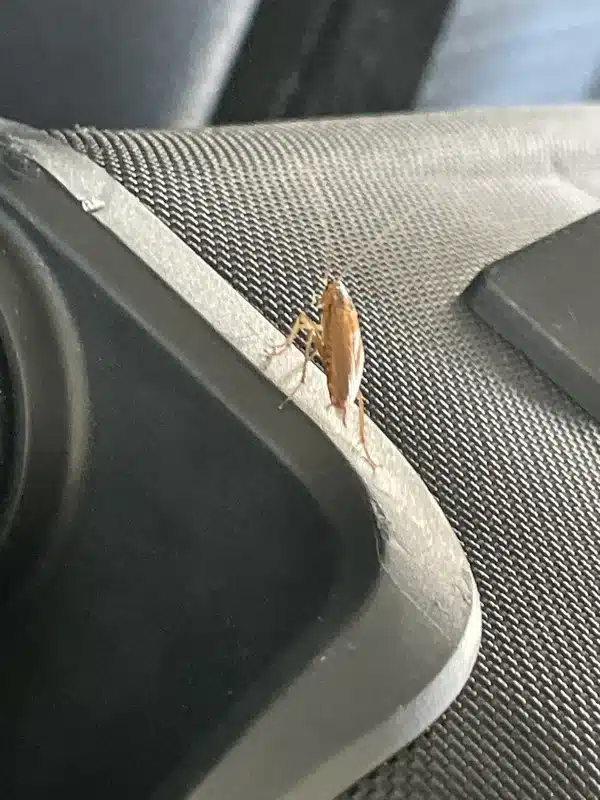If you’ve ever caught a whiff of something oily and musty in your home, you might be dealing with cockroaches. As a registered technician with four years in the field and part of a family business that’s served the DMV area for over 50 years, I’ve encountered this distinct smell countless times. Understanding what cockroaches smell like can help you catch an infestation early, before it becomes a major problem.
Cockroaches produce a signature oily-musty odor that comes from chemicals they release. These aren’t just random smells - they’re actually communication tools roaches use to find each other and establish colonies in your home.
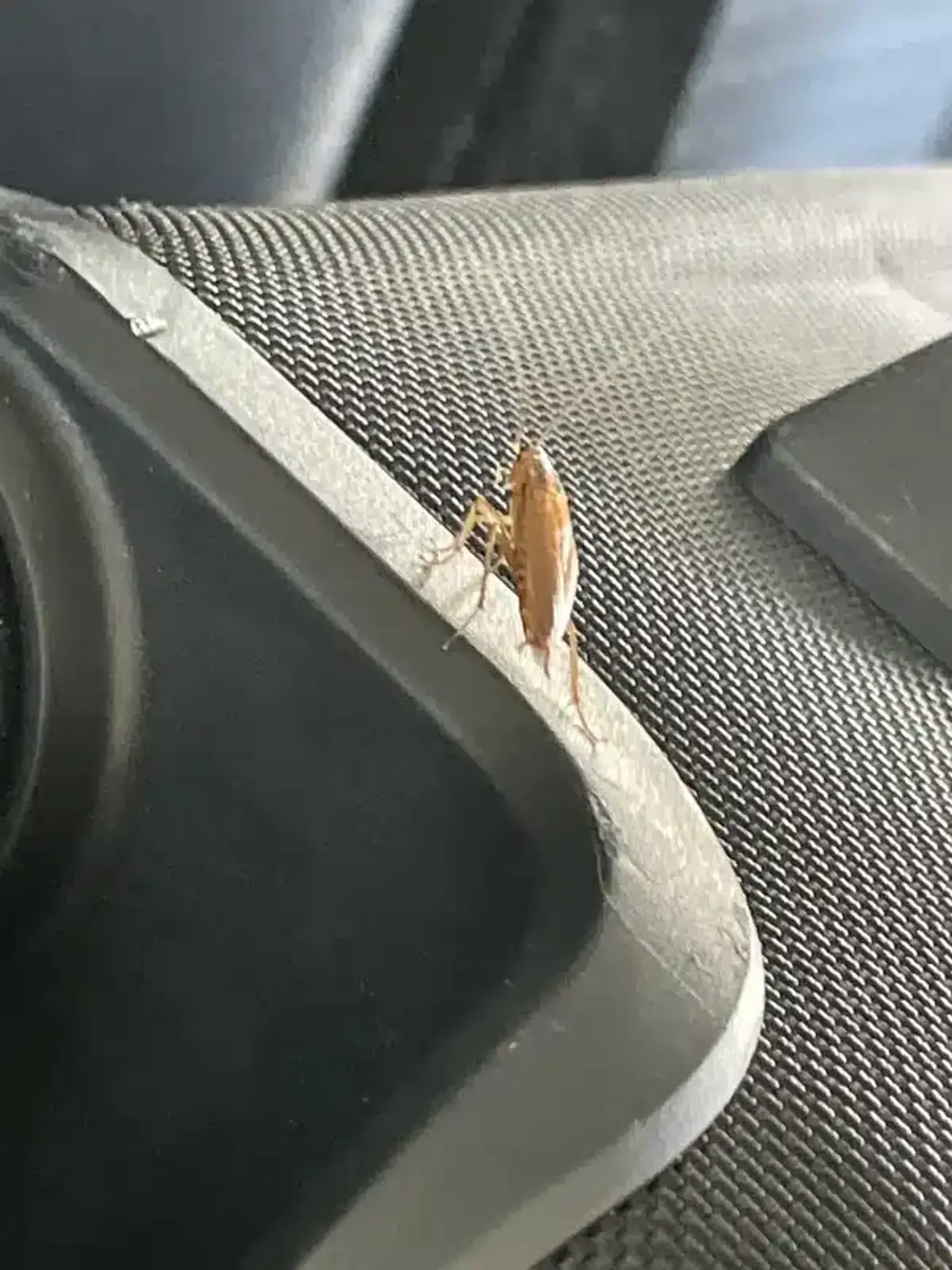
The Science Behind Cockroach Smell
What cockroaches smell like comes down to chemistry. These pests release cuticular hydrocarbons, volatile carboxylic acids, and oleic acid trails as they move around your home. Recent scientific research has revealed the complex biological processes behind these odors.
What does the science say?
According to research published in PNAS (Proceedings of the National Academy of Sciences), gut bacteria in cockroaches actually produce many of these smelly compounds. The study found that bacterial communities living inside roaches generate volatile organic compounds (VOCs) that contribute significantly to their characteristic odor. This research explains why cockroach smells are so persistent - they’re not just surface secretions but products of internal biological processes that continue as long as the insects are alive.
The smell serves a specific purpose - it’s how roaches communicate with each other. These aggregation pheromones help them find safe spots to hide and breed. Unfortunately, what helps roaches also helps homeowners detect them.
In my experience treating homes across Virginia, Maryland, and DC, the smell intensity directly relates to how many roaches you’re dealing with. A few scattered roaches might not produce a noticeable odor, but hundreds or thousands certainly will.
Recognizing Different Cockroach Species by Smell
Not all cockroaches smell exactly the same. Different species produce slightly different odors, which can help identify what you’re dealing with.
German Roach Smell Like: Identifying the Sharp, Greasy Odor
German roaches produce the sharpest, most pungent smell. It’s often described as greasy or oily with a strong musty undertone. These small roaches with two brown stripes are the most common indoor species I encounter in DMV area apartments and townhomes.
German roaches typically infest kitchens and bathrooms first. If you smell something oily near your kitchen cabinets or under the sink, German roaches might be the culprit.
What American Cockroaches Smell Like: Earthy, Less Pungent Odor
American roaches (often called water bugs) have a less pungent but more earthy smell. These larger roaches thrive in DC’s older basements and sewer systems. Their odor can sometimes be mistaken for general basement mustiness.
Oriental Cockroach Odor
Oriental roaches produce a damp, mildew-like smell that’s easily confused with actual mold problems. I’ve seen many homeowners in older row houses initially think they have moisture issues when they actually have Oriental roach infestations.
| Species | Odor Description | Intensity | Common Location |
|---|---|---|---|
| German Roach | Sharp, greasy, oily | High | Kitchen, bathroom |
| American Roach | Earthy, basement-like | Medium | Basements, sewers |
| Oriental Roach | Damp, mildew-like | Medium | Moist areas, drains |
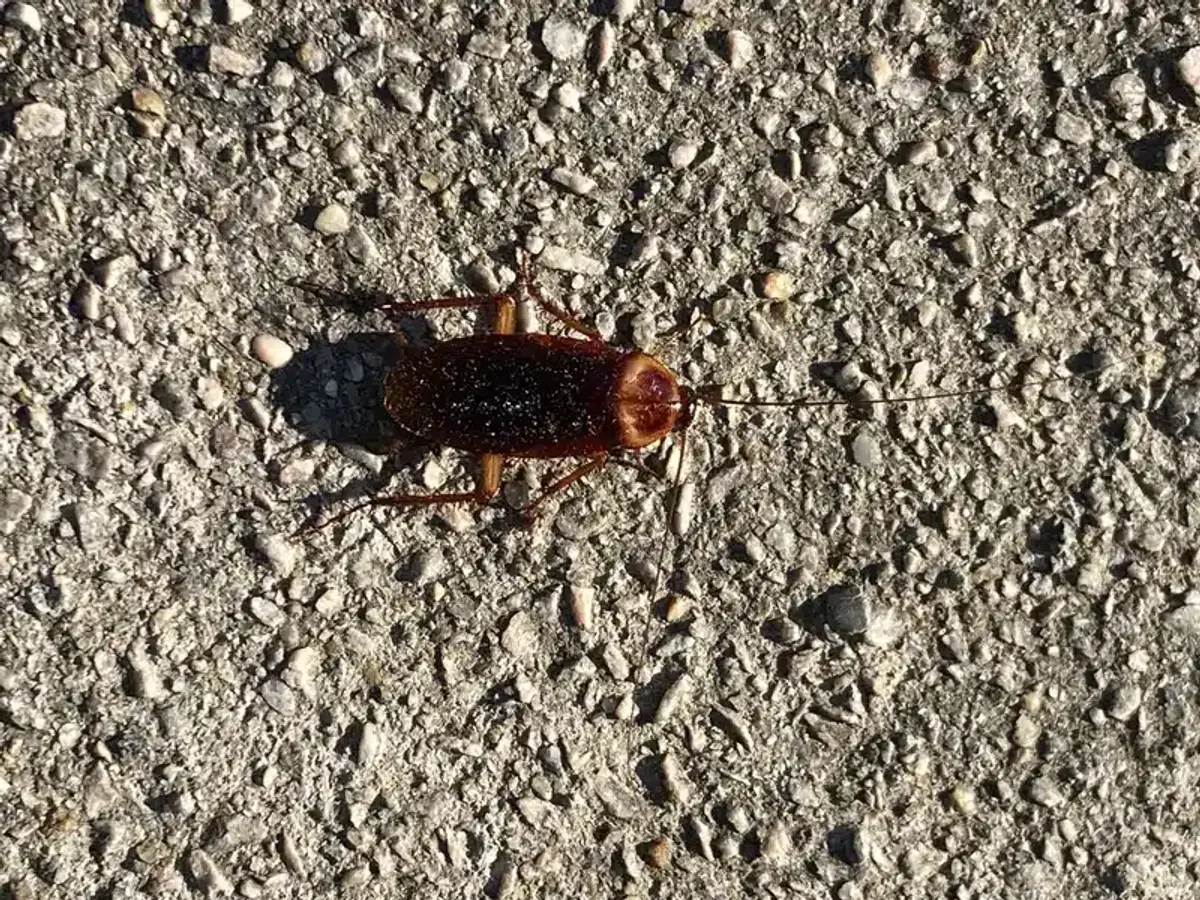
How Cockroach Infestation Size Affects Smell Intensity
The relationship between what cockroaches smell like and how many you have isn’t linear - it’s logarithmic. A small infestation might produce barely detectable odors, while a large colony creates a house-wide smell you can’t ignore.
In my four years treating cockroach problems, I’ve noticed that once you can smell roaches throughout multiple rooms, you’re likely dealing with hundreds or thousands of insects. At this point, the infestation has usually been growing for months.
Environmental factors in our DMV climate make the problem worse. Warm temperatures (70-85°F) and humidity above 40% - common during our summers - intensify the smell by making those volatile compounds evaporate faster.
Dead Cockroach Smell vs Living Colony Odor
What cockroaches smell like when they’re dead is distinctly different from living colony odors. Dead roaches release bursts of oleic acid that create a sharp, rancid smell. This “death stench” can actually be stronger than the musty odor from living roaches.
After treatment, many homeowners notice the smell gets worse before it gets better. This happens because roaches often die inside wall voids where you can’t remove them immediately. The decomposition process can take days or weeks, depending on humidity and temperature.
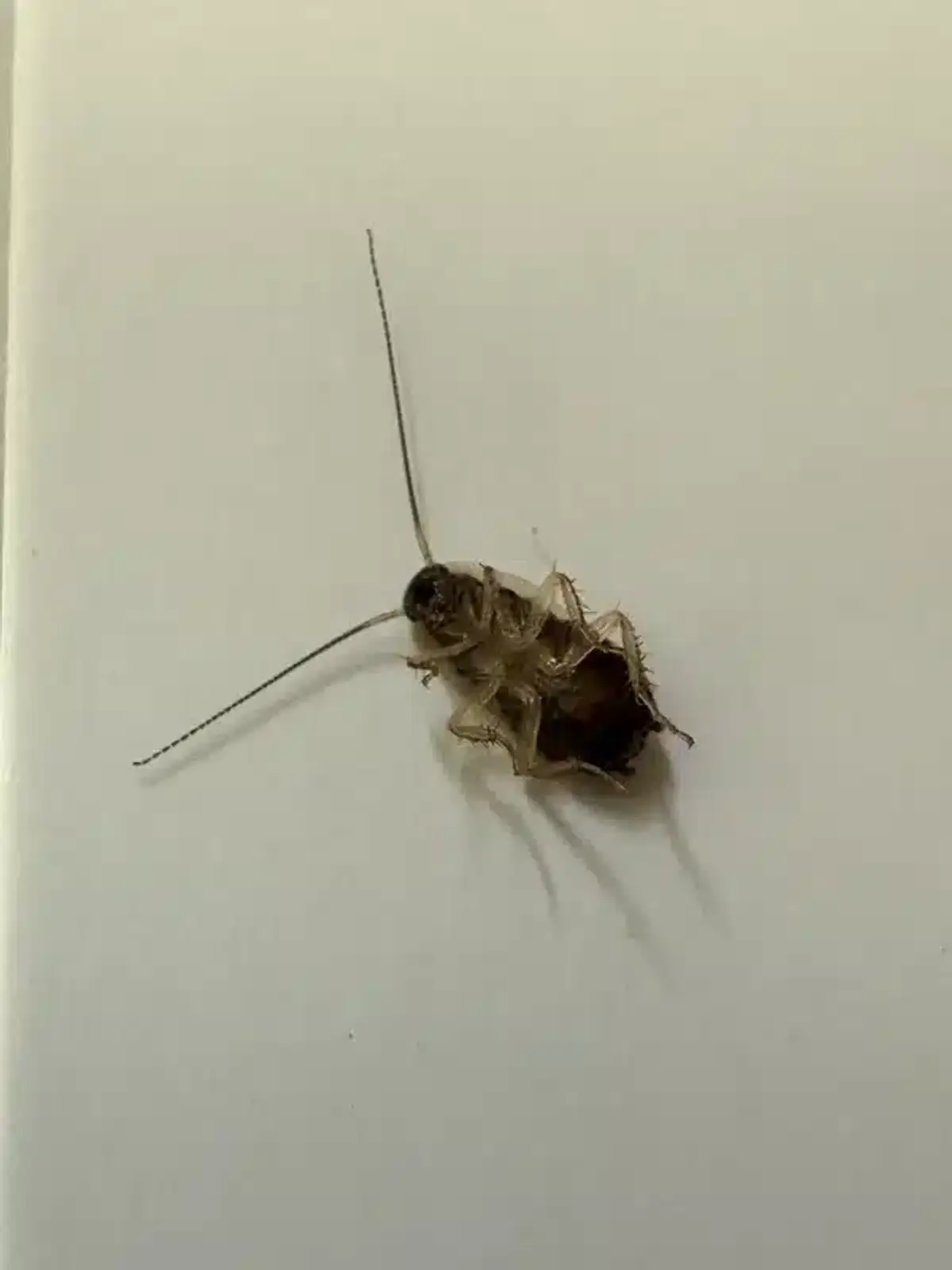
Health Implications of Cockroach Odors
The smell isn’t just unpleasant - it indicates serious health risks. Cockroaches carry at least 5 different diseases and can spread salmonella and other bacteria throughout your home. When you smell roaches, you’re also breathing in allergens that can trigger asthma attacks.
According to Environmental Health Perspectives, cockroach allergens are found in 63% of U.S. homes. Children exposed to high levels of cockroach allergens are 3.7 times more likely to be hospitalized for asthma.
The Asthma and Allergy Foundation lists cockroaches among the top perennial asthma triggers. Often, people smell the infestation before they see any roaches, making odor recognition crucial for protecting your family’s health.
Health Warning: When Cockroach Smells Signal Danger
- Asthma Risk: Children exposed to cockroach allergens are 3.7x more likely to be hospitalized for asthma
- Disease Transmission: Roaches carry salmonella, E. coli, and at least 5 other diseases on their bodies
- Allergic Reactions: Cockroach allergens are found in 63% of U.S. homes and trigger year-round symptoms
- Immediate Action: If you smell roaches, you’re breathing in allergens - address the infestation quickly
Using Smell to Locate Hidden Roach Infestations
Understanding what cockroaches smell like helps you track down their hiding spots. The odor typically concentrates near harborage areas like under refrigerator motors, inside sink cabinets, and in wall voids near plumbing.
I recommend doing a “night-time silence sniff test” when hunting for roaches. Turn off your HVAC system and walk through your home quietly after dark. Roaches are most active at night, and without air circulation, you can better detect odor gradients that lead to their nests.
Focus your nose on these common hiding spots:
- Kitchen cabinets, especially near the sink
- Behind and under appliances
- Bathroom vanities and medicine cabinets
- Basement storage areas
- Wall voids near water pipes
Food and Surface Contamination
What cockroaches smell like extends beyond their bodies - they contaminate everything they touch. Their cuticular secretions and fecal droppings can alter the taste of stored food. I’ve seen cases where homeowners noticed their pantry items tasted “off” before realizing they had a roach problem.
The oily compounds roaches leave behind are hydrophobic, meaning they resist ordinary cleaning with water. This is why the smell can linger on surfaces long after you’ve eliminated the insects themselves.
In severe infestations, the contamination becomes so widespread that it affects multiple rooms. Baby roaches are particularly problematic because they can squeeze into small spaces and spread the smell to areas you might not expect.
Distinguishing Cockroach Smell from Mold and Mildew
Many homeowners confuse what cockroaches smell like with mold or mildew odors. Both can be musty, but there are key differences that help distinguish them.
Mold typically produces earthy, wet-sock smells from compounds called mVOCs. Cockroach odors add a fatty, oily overtone that mold doesn’t have.
What does the science say?
According to the EPA’s mold guidance, mold produces characteristic earthy, wet-sock smells from compounds called microbial volatile organic compounds (mVOCs). These are chemically distinct from cockroach-produced hydrocarbons and fatty acids. The EPA notes that mold odors typically indicate moisture problems, while cockroach odors signal pest contamination. Understanding these chemical differences helps homeowners identify the true source of musty smells in their homes.
Additionally, cockroach smells often come with visual evidence like pepper-like droppings or egg cases. If you smell something musty but can’t find any moisture sources or water damage, suspect cockroaches.
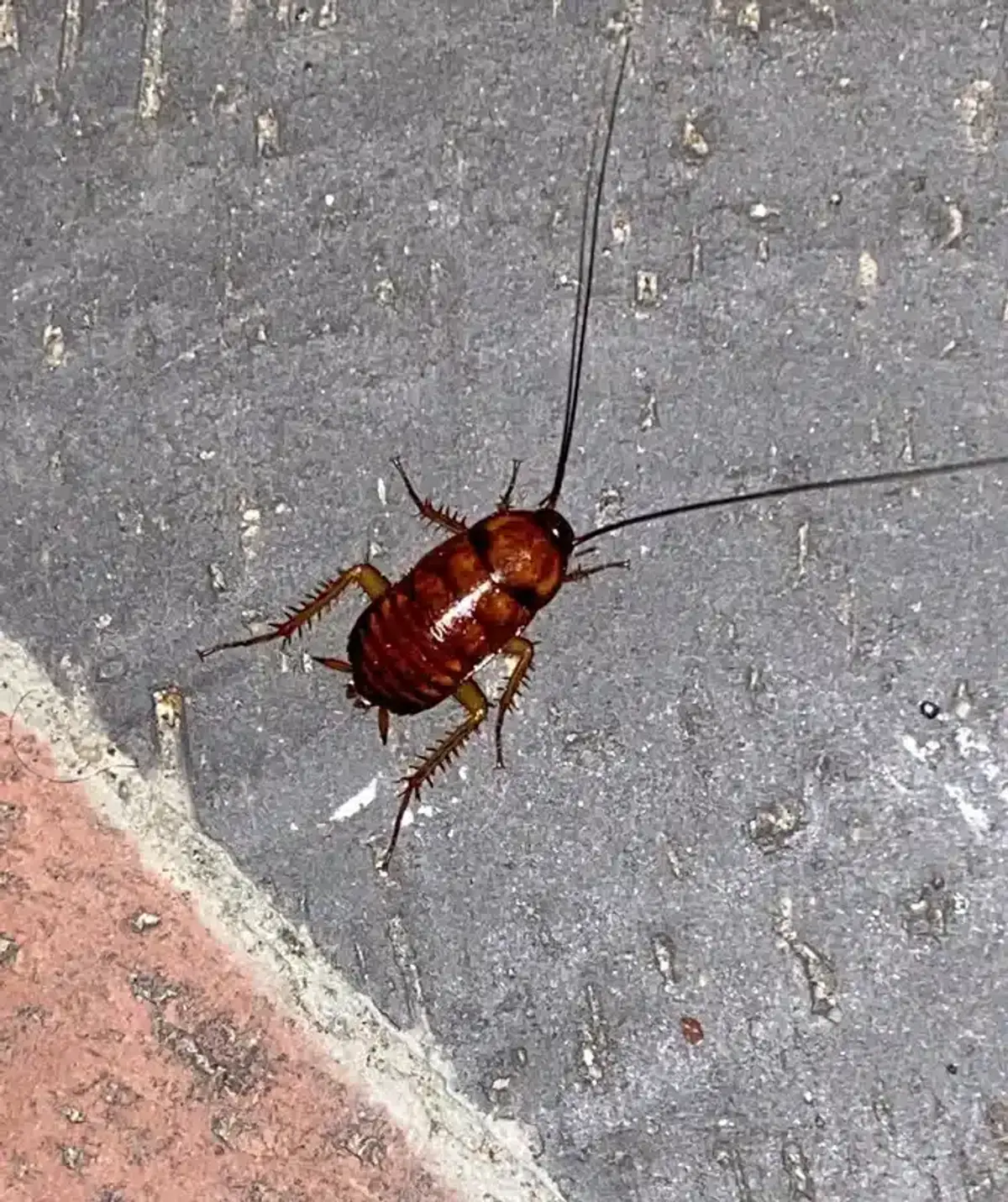
Why Cockroach Smell Lingers After Treatment
Even after successful treatment, what cockroaches smell like can persist for weeks or months. This happens for several reasons that homeowners often don’t expect.
First, carcasses decomposing inside wall voids continue producing odors. Second, fecal spots and pheromone residues remain on surfaces until properly cleaned. Finally, some cuticular hydrocarbons penetrate porous materials like unsealed wood and drywall paper.
Using bait treatments can actually make the smell worse initially because roaches die in hidden locations rather than in the open where you can remove them immediately.
Effective Cockroach Odor Removal Techniques
Removing cockroach odors requires a multi-step approach that goes beyond basic cleaning. Here’s what I recommend to homeowners after treatment:
- Mechanical removal: HEPA vacuum all debris, remove visible carcasses, and discard infested cardboard or paper materials
- Chemical cleaning: Use enzyme cleaners or alkaline detergents to break down lipids; vinegar helps with fatty acid residues
- Oxidative treatment: Hydrogen peroxide-based cleaners work well on porous surfaces
- Air purification: Activated carbon air scrubbers and increased ventilation help remove airborne odors
- Surface sealing: Prime and seal raw wood or drywall with shellac or acrylic primer after cleaning
The key is patience. Complete odor elimination often takes several weeks of consistent cleaning and air circulation.
Essential Odor Removal Steps
- Deep Clean First: HEPA vacuum all surfaces, remove all visible carcasses and debris before applying any cleaning products
- Break Down Oils: Use enzyme cleaners or alkaline detergents specifically designed to break down lipids and fatty residues
- Neutralize Acids: White vinegar helps neutralize fatty acid residues that contribute to lingering odors
- Oxidize Odors: Hydrogen peroxide-based cleaners work exceptionally well on porous surfaces like unsealed wood
- Seal Surfaces: After cleaning, prime and seal raw wood or drywall with shellac primer to prevent odor re-emergence
When to Call Professional Pest Control for Cockroach Infestations
Certain odor situations indicate you need professional intervention. If you can smell cockroaches in multiple rooms during daylight hours, you’re likely dealing with a severe infestation that requires expert treatment.
Similarly, if the smell persists more than two weeks after DIY treatment, hidden carcasses or ongoing activity may need professional attention. Our technicians have specialized equipment to reach wall voids and other inaccessible areas.
In the DMV area’s older homes, particularly pre-1940 row houses, American roaches often connect to shared sewer systems that require coordinated treatment approaches.
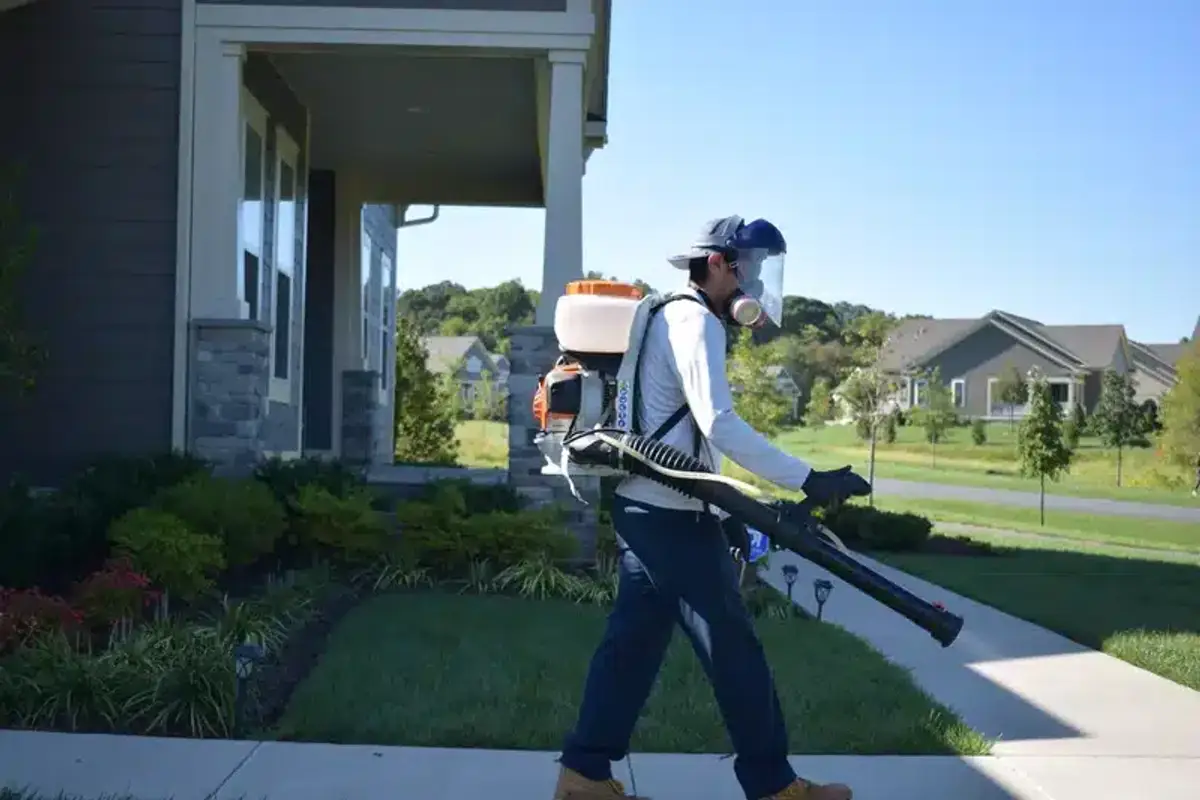
Regional Considerations for DMV Area Homes
Our humid subtropical summers create extended breeding seasons for cockroaches, intensifying what cockroaches smell like throughout warm months. German and American species dominate local infestations, each with distinct odor profiles.
Older brick townhouses in DC and Baltimore lack proper sub-floor ventilation, causing odors to accumulate. Meanwhile, slab-on-grade construction near the Chesapeake Bay traps moisture and intensifies roach smells.
The University of Maryland Extension recommends maintaining indoor humidity below 50% and emphasizes that our regional climate makes professional treatment more effective than DIY approaches for serious infestations.
Understanding what cockroaches smell like gives you a powerful tool for early detection and effective treatment. The distinct oily, musty odor serves as an early warning system that can save you from dealing with a full-blown infestation later.
Don’t ignore unusual smells in your home. Early detection and proper treatment protect both your property and your family’s health. If you’re noticing persistent odors or want a professional assessment, our experienced team can help identify the source and develop an effective treatment plan.
Contact Better Termite & Pest Control at 703-683-2000 or email us at info@bettertermite.com for a thorough inspection and treatment plan tailored to your specific situation.
Frequently Asked Questions
How strong does the cockroach smell get before you notice it?
+
Most people start noticing cockroach odors when there are several dozen to over a hundred roaches present. The oily, musty smell becomes more obvious in enclosed spaces like cabinets or basements first, then spreads to larger areas as the infestation grows.
Can you smell cockroaches through walls?
+
Yes, cockroach odors can penetrate through wall materials, especially around electrical outlets, plumbing penetrations, and cracks. The smell often indicates roaches are living inside wall voids, which makes treatment more challenging and typically requires professional intervention.
Do all types of cockroaches smell the same?
+
No, different cockroach species produce distinct odors. German roaches have a sharp, greasy smell, American roaches smell more earthy, and Oriental roaches produce a damp, mildew-like odor that's often confused with moisture problems.
How long does cockroach smell last after treatment?
+
Cockroach odors can persist for 2-8 weeks after treatment, depending on infestation size and treatment method. Dead roaches in wall voids, pheromone residues, and contaminated surfaces all contribute to lingering smells that require thorough cleaning to eliminate completely.
Does cockroach smell always mean a large infestation?
+
Not necessarily, but noticeable odors usually indicate at least dozens of roaches. Environmental factors like humidity and temperature affect how easily you detect the smell. However, if you can smell roaches in multiple rooms, you likely have hundreds or thousands present.
Can cockroach smell make you sick?
+
The odor itself indicates the presence of cockroach allergens that can trigger asthma and allergic reactions. While the smell doesn't directly cause illness, it signals contamination from bacteria and pathogens that cockroaches carry, making professional treatment important for health reasons.
What's the difference between live and dead cockroach smell?
+
Live cockroaches produce a musty, oily odor from their aggregation pheromones. Dead cockroaches release oleic acid that creates a sharper, more rancid smell. After treatment, the dead roach smell often becomes more noticeable before the overall odor improves.
How do you remove cockroach smell from your house?
+
Effective odor removal requires removing all debris and carcasses, cleaning with enzyme cleaners or alkaline detergents, using oxidative cleaners on porous surfaces, running air purifiers with activated carbon, and sealing cleaned surfaces with primer to prevent odor penetration.
With five years of hands-on experience in the pest control industry, George Schulz is a registered technician with the Virginia Pest Management Association and a proud third-generation professional in a family business that's been protecting homes for over 57 years. He manages and trains a team of service pros while also leading internal research efforts—recently spearheading a deep-dive review of thousands of documents on pest control materials to hand-pick the most kid and pet friendly, most effective solutions tailored specifically for homes in the DC metro area.
